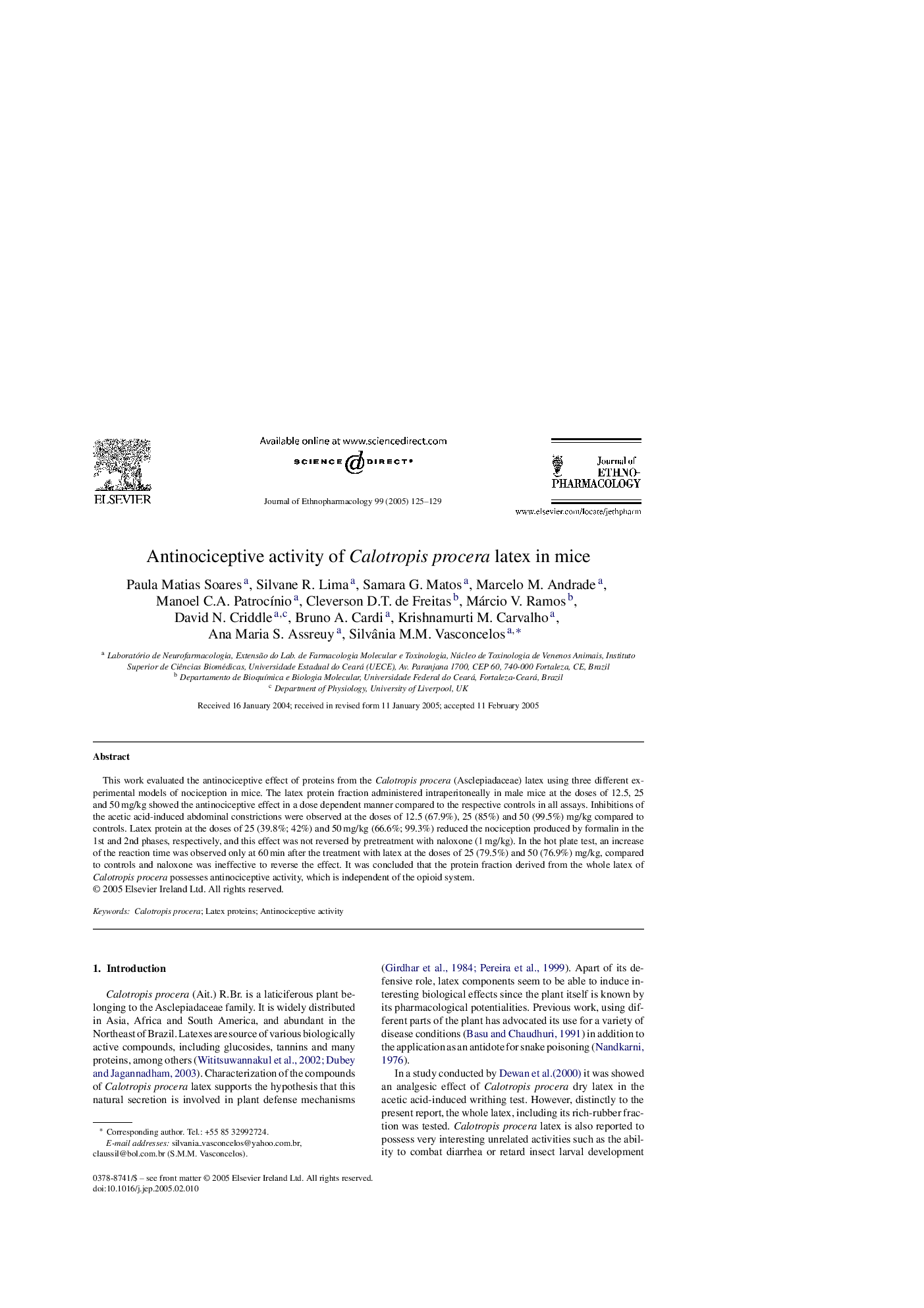| Article ID | Journal | Published Year | Pages | File Type |
|---|---|---|---|---|
| 9011328 | Journal of Ethnopharmacology | 2005 | 5 Pages |
Abstract
This work evaluated the antinociceptive effect of proteins from the Calotropis procera (Asclepiadaceae) latex using three different experimental models of nociception in mice. The latex protein fraction administered intraperitoneally in male mice at the doses of 12.5, 25 and 50Â mg/kg showed the antinociceptive effect in a dose dependent manner compared to the respective controls in all assays. Inhibitions of the acetic acid-induced abdominal constrictions were observed at the doses of 12.5 (67.9%), 25 (85%) and 50 (99.5%) mg/kg compared to controls. Latex protein at the doses of 25 (39.8%; 42%) and 50Â mg/kg (66.6%; 99.3%) reduced the nociception produced by formalin in the 1st and 2nd phases, respectively, and this effect was not reversed by pretreatment with naloxone (1Â mg/kg). In the hot plate test, an increase of the reaction time was observed only at 60Â min after the treatment with latex at the doses of 25 (79.5%) and 50 (76.9%) mg/kg, compared to controls and naloxone was ineffective to reverse the effect. It was concluded that the protein fraction derived from the whole latex of Calotropis procera possesses antinociceptive activity, which is independent of the opioid system.
Related Topics
Health Sciences
Pharmacology, Toxicology and Pharmaceutical Science
Pharmacology
Authors
Paula Matias Soares, Silvane R. Lima, Samara G. Matos, Marcelo M. Andrade, Manoel C.A. PatrocÃnio, Cleverson D.T. de Freitas, Márcio V. Ramos, David N. Criddle, Bruno A. Cardi, Krishnamurti M. Carvalho, Ana Maria S. Assreuy, Silvânia M.M. Vasconcelos,
